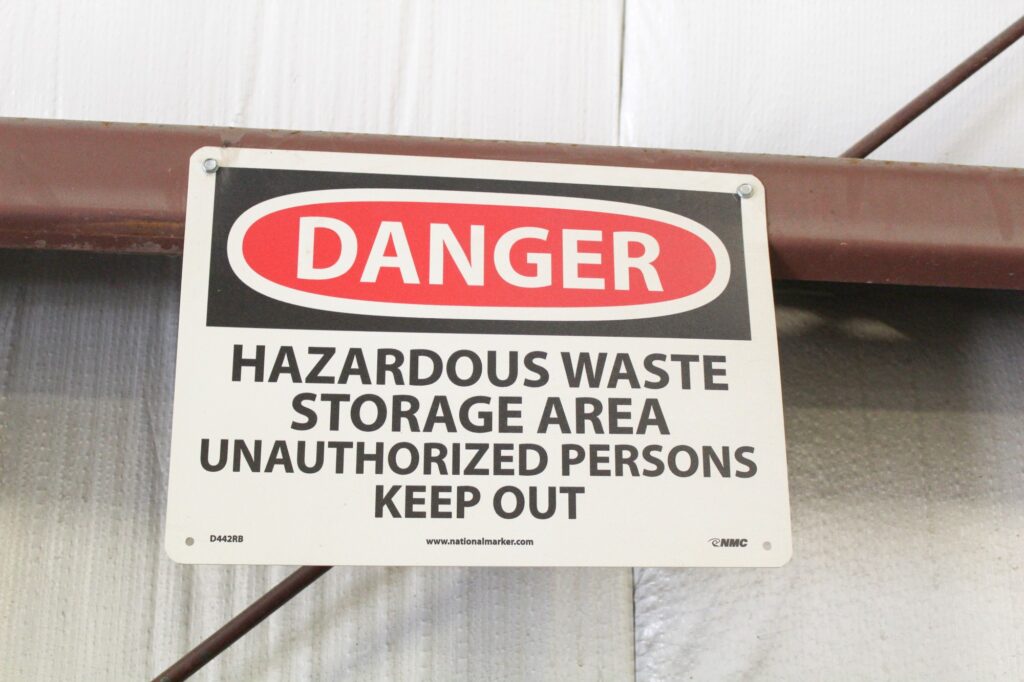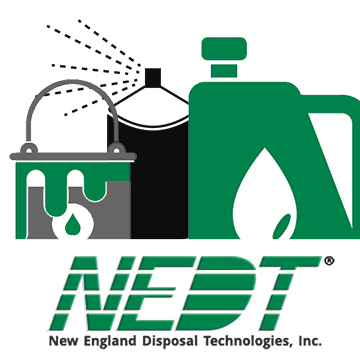At NEDT, we accept many kinds of household hazardous products, but not hazardous construction materials. When it comes to hazardous waste such as asbestos or lead-painted wood, the risk they pose during removal, transit, and delivery puts both the homeowner and staff at risk. Today we’re going to talk about what to do when you discover hazardous construction materials like asbestos or painted lead, why you should leave removal and transportation to the experts, and what other materials you can bring into one of our collection centers.
Asbestos Construction Materials
Asbestos is a naturally occurring fibrous mineral whose filament-like silica was used in home construction. These asbestos filaments can break off and become airborne, entering the lungs and becoming lodged there. A known carcinogenic, asbestos inhalation has been linked to numerous forms of throat, lung, and other types of cancer. Older homes may contain asbestos, especially as exterior or attic insulation, fireproofing, and electrical insulation.
According to the Massachusetts Department of Environmental Protection (MassDEP), while such construction materials can be left in place if safe, during renovation or demolition they must be removed. There are MassDEP requirements for anyone handling asbestos, and it’s recommended that only a Department of Labor Standards (DLS) certified worker inspect, remove, and transport it. Learn more, including contact information and frequently asked questions, in this MassDEP Asbestos Guide.
- Learn more about asbestos with our Asbestos Fact Sheet PDF.
Lead-Painted Construction Materials
Although paint—even lead paint—has many options for disposal while still in the paint can, once it’s been painted onto surfaces, it’s another story. Homes, especially those built before 1978, may contain lead paint and fall under the Massachusetts Lead Law that requires containment or removal of such lead. As it deteriorates or is damaged during renovation or removal, lead paint poses a health threat—especially in children under the age of 6 where it can cause permanent and serious neurological damage.
If you’re uncertain about the presence of lead paint, you can hire a licensed lead inspector to review and test your home, as well as remediate the lead. You can learn more by visiting MA’s Childhood Lead Poisoning Prevention Program website. They will provide guidance, including best practices for de-leading and how to manage debris, which can often be disposed of in the garbage as long as chipping is prevented.
- Learn more about lead-painted wood with our Wood with Lead Paint Fact Sheet PDF.
NEDT’s Collection Centers Do Not Accept Hazardous Construction Materials
While at NEDT we can accept a wide array of household hazardous products, including cans of oil-based lead paint, mercury, and lead materials in eWaste, we do not accept treated wood or wood with lead paint, nor asbestos. In those instances, it’s important you contact the relevant MassDEP program and contact the specialists who can help. Before you make your trip to an NEDT collection center with materials we do accept, make sure to review what we don’t accept to avoid putting your life or the lives of others at risk. If you have any questions or would like to schedule a pick-up, contact NEDT at 1.866.769.1621 or on our contact page.



Leave a Reply